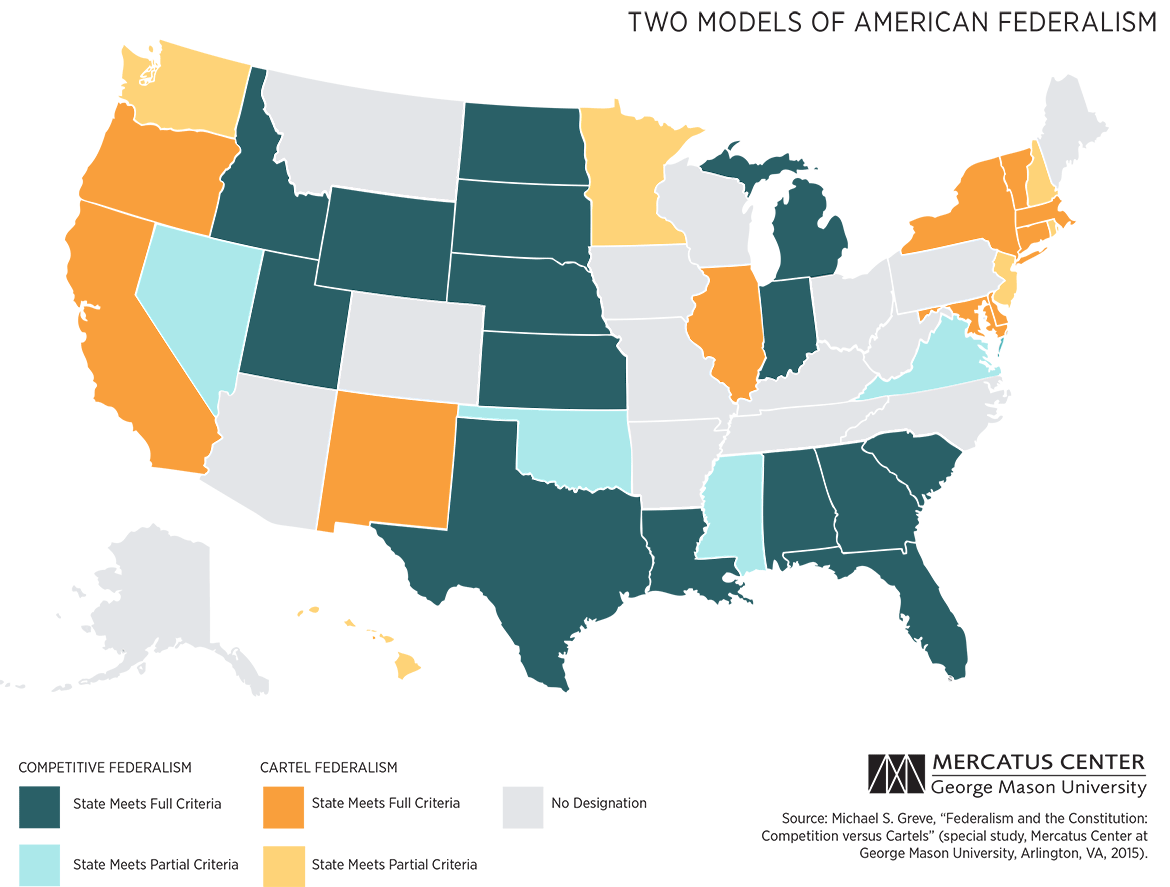Alex Adrianson highlights for the Heritage Foundation’s “Insider Online” blog an interesting assessment of two different types of American states.
Some states compete for citizens with good policy while other states want to limit that competition by forcing other states to have the same policies they do. The former approach is called competitive federalism while the latter is called policy cartelization. To which camp does your state belong? Michael Greve has sketched out where the states fall on this issue in the map below. …
Labor Regulation. Competitive states have right-to-work laws; cartel states do not. (Right-to-work laws are a very good proxy for states’ overall business regulation.)
Affordable Care Act. The ACA’s expansion of Medicaid and its health care exchanges embody a comprehensive cartel regime, financed through federal transfer payments and subsidies. Competitive states opposed the ACA in NFIB v. Sebelius (2012); cartel states supported the act.
Climate Change. “Green” policies entail high-cost production. States that are committed to such policies put themselves at a competitive disadvantage. Thus, their strategy is to raise their competitive (and, typically, energy-producing) rivals’ costs through federal climate change regulation. Competitive states opposed such regulation in Massachusetts v. EPA (2007), Utility Air Regulatory Group v. EPA (2014), or both; cartel states supported federal regulation.
States supporting the competitive position in two or three criteria are shown in light and dark aqua, respectively. States supporting the cartel position are shown in orange.



